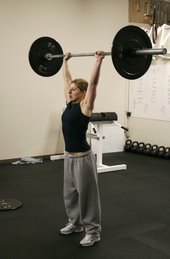Last week's lunch was part biochemistry, part activism and part culinary theatrics. I wanted Curry Chicken Salad without the soybean oil or canola oil in standard mayonnaise (please don't make me explain why again). I decided to make my own Olive Oil mayonnaise - something I've done before with sub par results. My plan this time was to use 'light' olive oil without the pungent taste that made my previous attempt underwhelming especially with curry. After a couple of botched batches and an extravagant waste of free-roaming eggs, I finally saved the separated mess with the help of one extra egg yolk and the sage troubleshooting advice from 'The Joy of Cooking."
This week, I wanted no such drama. I wanted shredded chicken with an Asian inspired slaw but now new obstacles awaited. First, there's the drama at [large chain of organic markets that could easily sue me] and their cabbage crunch. Several years ago, I commented to a familiar deli worker that their cabbage crunch was particularly tasty. He smiled and said, "that's probably because we add a little bacon fat." Bacon fat, by the way, was not on their snazzy index card of ingredients.
Um, I'm Muslim though not a particularly good one. The no-pork thing was the area in which I excelled. I thought it was going to be my one pinkie toe out of hell. And since I'm not a particularly good Muslim, I wasn't sure whether I was obligated to throw myself on a sword at that point. I wasn't happy and for that one moment Muslims and Jews united - with a big group hug from the vegetarians.
Now [large chain of organic markets that could easily sue me] has an Asian Slaw with, yep, canola oil. Given the great pains I've taken to dodge and weave Canola thus far, it would be sad to cave now and it's really just a few ingredients that I can easily make myself. Now I have to tackle the great slivered almond debate. Almonds or no Almonds? Toasted or not Toasted?
These brings up the question of rancidity or aflatoxin? If I use raw almonds, I'll reduce though not completely eliminate the chance of rancidity which occurs with toasted nuts when the oil is heated at too high a temperature or when nuts are stored and the oils oxidize. This creates free radicals which can lead to cancer.
Rancidity
According to some shmo on the internet - really it was the only place I could find someone who would provide an actual temperature - "Roasting nuts at a temperature higher than 170F will cause a breakdown of their fats and the production of free radicals. When nuts roasted at the high temperatures used commercially are consumed, the free radicals they contain can cause lipid peroxidation-the oxidizing of fats in your bloodstream that can trigger tiny injuries in artery walls-a first step in the build up of plaque and cardiovascular disease." Feel free to refute my shmo with a shmo of your own. Either way, we've got an answer.
Aflatoxin
Then there's aflatoxin which is a fungi that contaminates food. The quick explanation is provided by the World Health Organization in a published report Workgroup Report: Public Health Strategies for Reducing Aflatoxin Exposure in Developing Countries "The International Agency for Research on Cancer (IARC) first recognized aflatoxins as carcinogenic in 1976. It subsequently reaffirmed naturally occurring mixtures of aflatoxins and AFB1 as Group 1 carcinogens (carcinogenic to humans) (IARC 2002). Additional effects of chronic exposure have not been widely studied, but are thought to include immunologic suppression, impaired growth, and nutritional interference." It's another one of those things that the government regulates here to a 'safe' level though safe levels haven't been established. It commonly contaminates nuts though peanuts tend to be the largest offender and roasting nuts can kill much of the fungi.
Omega 6
We've covered this but it's worth mentioning again. Because Omega-3 is anti-inflammatory and Omega-6 is inflammatory, you want to increase your Omega-3 and decrease your Omega-6 intake. Most nuts are high in Omega-6 so it's really more of a lesser-of-evils sort of question.
Now, back to that salad
The recipe includes shredded cabbage - I'm going with both purple and green, sesame seeds - probably black and white, slivered almonds, green onions, shredded chicken and a dressing that includes vinegar, probably some Tamari (fermented soy doesn't have active isoflavones), light olive oil, and whatever else I decide to toss in at the last minute.
In a chart provided by Nutrition Data, all my food micromanagement can be realized in one compelling page of charts that will keep me analyzing way past lunch:
Caloric Ratio Pyramid™This symbol shows how the Calories in this food are distributed between the different macronutrients, and can help you identify foods that best match certain diet plans, such as low-fat, low-carb, high-protein, or balanced-ratio.
Learn more about:ND's Caloric Ratio Pyramid
Nutrient Balance Indicator™This symbol illustrates the density of essential nutrients in this food, and can help you create meals that are healthier and more nutritionally balanced.
Learn more about:ND's Nutrient Balance Indicator
Nutritional Target Map™ (Patent Pending)This symbol maps this food in relation to common nutritional goals. Foods closer to the upper right corner are Better Choices for healthy weight loss, while foods closer to the lower right corner are Better Choices for healthy weight gain.
Learn more about:ND's Nutritional Target MapND's Fullness FactorND's RatingND's Better Choices Diet
Apparently, as I busily crunch numbers, there will be no time for crunching Asian Slaw. Perhaps a 'Happy Meal'? I heard the fries are finally trans fat free . . . . . of course they'll still kill you.
skip to main |
skip to sidebar








A conversation with my clients about exercises, work-outs and nutrition
Search This Blog

About Me
- Heather
- I'm an NSCA-PT and CrossFit certified personal trainer with nine years experience. I hold a purple belt in Brazilian Jiu Jitsu under Marcelo Alonso and Ben Blackstone and I am a Karnataka State Gold Medalist in Weightlifting.

Books
Brain Rules: 12 Principles for Surviving and Thriving at Work, Home, and School Food Politics: How the Food Industry Influences Nutrition, and Health, Revised and Expanded Edition (California Studies in Food and Culture)
Food Politics: How the Food Industry Influences Nutrition, and Health, Revised and Expanded Edition (California Studies in Food and Culture) Good Calories, Bad Calories: Fats, Carbs, and the Controversial Science of Diet and Health (Vintage)
Good Calories, Bad Calories: Fats, Carbs, and the Controversial Science of Diet and Health (Vintage) The Omnivore's Dilemma: A Natural History of Four Meals
The Omnivore's Dilemma: A Natural History of Four Meals Practical Programming for Strength Training
Practical Programming for Strength Training PROTEIN POWER
PROTEIN POWER Secrets of the Soil : New Solutions for Restoring Our Planet
Secrets of the Soil : New Solutions for Restoring Our Planet Starting Strength (2nd edition)
Starting Strength (2nd edition) The Brain Trust Program: A Scientifically Based Three-Part Plan to Improve Memory, Elevate Mood, Enhance Attention, Alleviate Migraine and Menopausal Symptoms, and Boost Mental Energy
The Brain Trust Program: A Scientifically Based Three-Part Plan to Improve Memory, Elevate Mood, Enhance Attention, Alleviate Migraine and Menopausal Symptoms, and Boost Mental Energy Fiber Menace: The Truth About the Leading Role of Fiber in Diet Failure, Constipation, Hemorrhoids, Irritable Bowel Syndrome, Ulcerative Colitis, Crohn's Disease, and Colon Cancer
Fiber Menace: The Truth About the Leading Role of Fiber in Diet Failure, Constipation, Hemorrhoids, Irritable Bowel Syndrome, Ulcerative Colitis, Crohn's Disease, and Colon Cancer The Revolution Will Not Be Microwaved: Inside America's Underground Food Movements
The Revolution Will Not Be Microwaved: Inside America's Underground Food Movements The Zone: A Dietary Road Map to Lose Weight Permanently : Reset Your Genetic Code : Prevent Disease : Achieve Maximum Physical Performance
The Zone: A Dietary Road Map to Lose Weight Permanently : Reset Your Genetic Code : Prevent Disease : Achieve Maximum Physical Performance Twinkie, Deconstructed: My Journey to Discover How the Ingredients Found in Processed Foods Are Grown, Mined (Yes, Mined), and Manipulated into What America Eats
Twinkie, Deconstructed: My Journey to Discover How the Ingredients Found in Processed Foods Are Grown, Mined (Yes, Mined), and Manipulated into What America Eats Mind the Gap: The Science Behind the Sporting Mind
Mind the Gap: The Science Behind the Sporting Mind Extraordinary Knowing: Science, Skepticism, and the Inexplicable Powers of the Human Mind
Extraordinary Knowing: Science, Skepticism, and the Inexplicable Powers of the Human Mind The Subtle Body: An Encyclopedia of Your Energetic Anatomy
The Subtle Body: An Encyclopedia of Your Energetic Anatomy Stumbling on Happiness
Stumbling on Happiness
Products

Blog Archive
-
▼
2007
(87)
-
▼
February
(14)
- New Named Workout
- Coffee With Your Warm-up?
- Girl Fight
- Be Bullet Proof
- Pick a Pistol Progression
- Organic: Everybody's Doing It
- Almond Addendum
- Lunch: It's Driving Me Nuts
- Dumbbell DDR
- Seminar Hiccup
- High Costs of Cheap Corn Syrup
- The Sugar Conversation
- Superbowl Party
- Should we be terrified by interesterified fats?
-
▼
February
(14)

Resources
- Art DeVany
- Brain Health
- Buy Kettlebells
- CrossFit Eastside
- CrossFit Main Page
- Dr. Cordain's Research
- Dr. Eades
- Dr. Ladd Carlston
- Dr. Randip Singh
- Environmental Working Group
- Food, Farming & Healing Arts
- Get Up! Newsletter
- Health Geek's Wikipedia
- Homework for 10a Class
- Jennifer Adler M.S., C.N.
- Marcelo Alonso BJJ
- Michael Pollan
- O'Lifting Coach Mike Burgener
- Predictably Irrational
- Robb Wolf
- TED: Ideas Worth Spreading
- THIS IS THE PREFERRED MEAL TRACKER
- Tim Ferriss, 4 Hour Work Week


